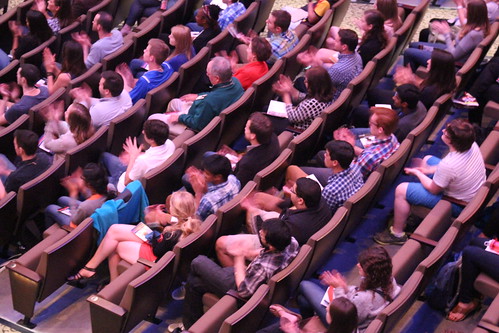 In a course I recently taught, I used and/or learned a few energizers. Since I love having these types of activities in my ‘back pocket’, I wanted to share them with you:
In a course I recently taught, I used and/or learned a few energizers. Since I love having these types of activities in my ‘back pocket’, I wanted to share them with you:
Ping Pong Ball
Good for a large group energizer.
Divide the group into 3 and have each sub-group stand or be in a separate area of the room. Position yourself where everyone can see you and assign one group “Ping”, the other group “Pong” and the third group “Ball”. Let the group know that, as you point to a particular group (area of the room), you want the members to shout out “their” group name. As the conductor, you then point to different groups and can have fun creating combinations of the three words (ping, pong, and ball), i.e., “ping, ping, ball, pong” etc.
Stand In The Circle If…
Good as an energizer or icebreaker for 6 people or more.
Everyone stands in a circle. Let people know that the activity consists of taking turns uttering an inclusions statement out loud and stepping into the circle if that statement applies. For example, one person might start by saying “Step in the circle if you prefer going to the beach over going for a hike on a sunny day”; those who feel this is true of them step into the circle. Then they step back out. The next person might say “Step into the circle if you plan to have a glass of wine this weekend” etc. People normally come up with fun statements and this activity always generates laughter.
The Rain Game…
This works well in a group of 25 or more people and is a powerful auditory experience. I know of people who have led this in a large (100+) class,but haven’t tried that myself.
This game signifies a rainstorm starting softly and getting louder until it is pouring, with lightning and thunder. The storm quiets down again.
- First, you silently rub your fingers together, and the participants do the same.
- Then you rub your two hands together, making a very soft sound, and the participants follow.
- Next, you clap your hands very softly while the participants follow (it should still be quiet-ish).
- Then snap your fingers. (in each of the steps below, the participants follow what you are doing)
- Now go back to clapping and clap a little louder than you were snapping.
- Then a little louder.
- Then clap loudly.
- Then stomp your feet and clap, making a lot of noise.
- Now do it in reverse until it is silent again.
The instructions above were taken from here.
*************
Do you have some fun energizers and/or icebreakers to share? If so, let me know!



